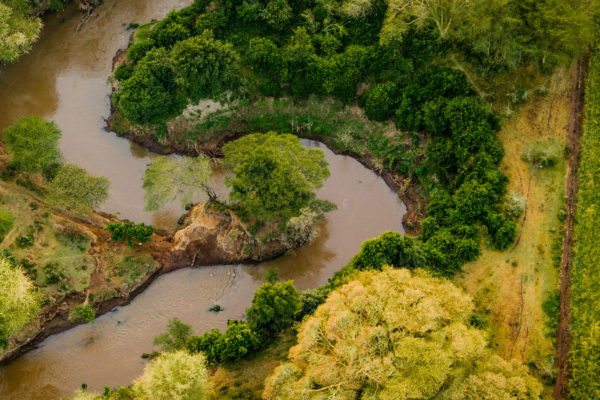
Building Consensus for Transboundary Water Management
The active involvement of Tanzanian officials offers promise of a better and more effective water resources management plan in the Mara River Basin.
When determining how to distribute a finite resource, securing cooperation between all who depend on the resource is crucial. But how do you do that, particularly when the limited resource in question – water – is the essential building block of life?
The USAID-funded Sustainable Water Partnership is working to address this question in the Mara River Basin in collaboration with government and local stakeholders in Kenya and Tanzania, as part of the three-year Sustainable Water for the Mara activity. In 2015, the governments of Kenya and Tanzania signed a Memorandum of Understanding (MoU) to jointly manage the water resources of the Mara basin, a world-famous ecosystem that between the two countries supplies more than a million people with their water needs.
The Mara River is slowly losing water for a variety of reasons, among them deforestation, land use change, rapid urbanization, population growth and climate change.
Two plans, merging into one
To understand the gap between the amount of water available against the demand, each country is developing a water allocation plan for their portion of the river basin. While Kenya started the process of developing an allocation plan in the upper Mara Basin before the inception of the Sustainable Water for the Mara activity, SWP is actively involved in building a similar plan for the lower basin in Tanzania. When completed, the Tanzanian plan will be harmonized with the Kenyan plan, with the result being a transboundary water allocation plan.
A central tenet of SWP’s water security improvement process is the active participation of water decision-makers in government agencies and other bodies.That’s why in Tanzania, SWP has engaged key stakeholders at each stage of the process to develop the water allocation plan. From the outset, these stakeholders emphasized the need to create a technical team to collect water data, then evaluate that data to estimate best-case and worst-case scenarios for water availability in the Mara basin. Data collection on water abstraction has since been undertaken as a collaboration between the Lake Victoria Basin Water Board, Tanzania’s Ministry of Water (MoW), local water user associations, local government officials, and non-governmental partners such as the World Wildlife Fund, the Nile Equatorial Lakes Subsidiary Action Program, the German development organization GIZ, and the Netherlands’ IHE Delft Institute for Water Education.

Engaging stakeholders, securing more effective agreements
Why is this important? Stakeholder engagement in the process is critical for early ownership. If conducted effectively, it leads to greater buy-in when the allocation plan is completed, and eventually to more effective implementation. These agencies have a lot on the line. Under Tanzanian law, the basin water boards are mandated to manage the water resources in their catchments on behalf of the Ministry of Water. For a transboundary river like the Mara, there are many hydrological considerations that come into play that require the collaboration and input of local, regional and national stakeholders. The early involvement of these officials in the water security improvement process can help herald stronger collaboration and greater ownership of the resulting water allocation plan, which should lead to more effective implementation.
In doing so, it creates a framework for water users and water decision-makers in Tanzania to discuss challenging questions around water, and ultimately make decisions to meet those challenges.
Related Projects

